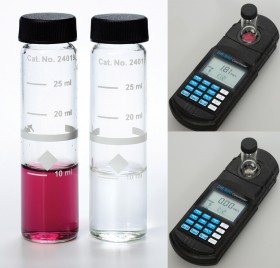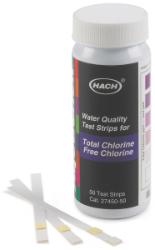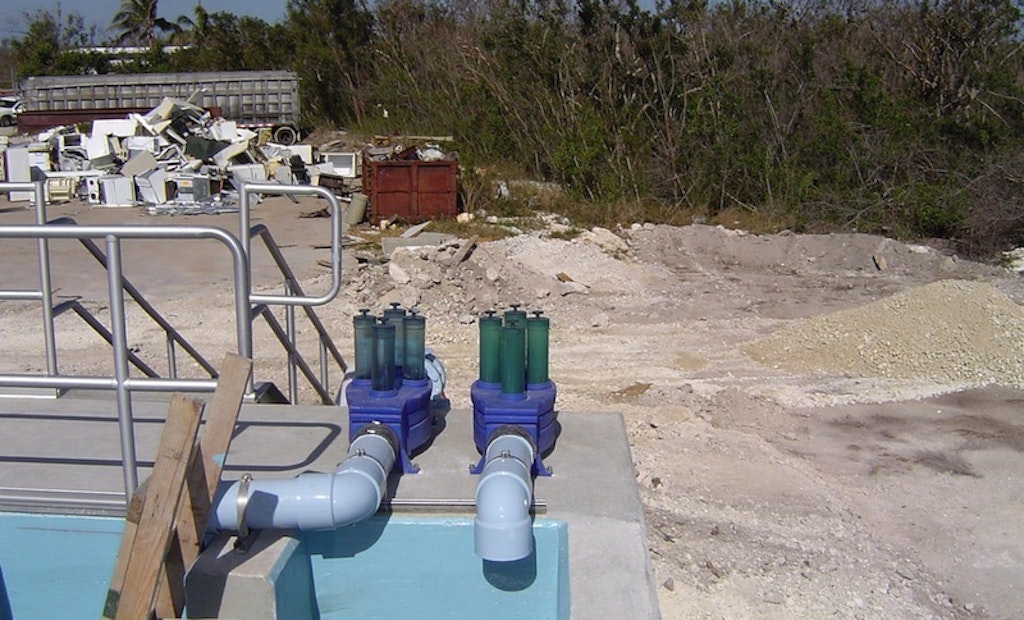Interested in Education/Training?
Get Education/Training articles, news and videos right in your inbox! Sign up now.
Education/Training + Get AlertsThroughout the U.S., wastewater effluent is chlorinated to kill pathogens and then dechlorinated before discharge. Knowing how to test the levels for both of these processes is critical for service providers managing systems utilizing chlorine disinfection.
Why chlorinate?
Chlorination is the process of adding chloride to wastewater to reduce the population of pathogenic organisms. It is important to have an appropriate holding time to allow the chlorine to react with the microorganisms. Generally, 10 to 50 minutes of contact time is required for typical wastewater strengths and chlorine concentrations. Chlorine residuals should be maintained at a level of typically 0.1 - 0.2 mg/L; check with your local regulations.
Why dechlorinate?
Dechlorination is not typically necessary for spray or other surface applications of effluent because sunlight rapidly degrades the chlorine and renders it harmless. When the chlorine residual must be zero, dechlorination is needed to remove residual chlorine from wastewater prior to direct discharge into a receiving stream, river or lake as chlorine is toxic to many kinds of aquatic life and can react with organic materials to form carcinogenic compounds. There should be no chlorine residual measurable in the effluent. Most states use the EPA’s criterion for permissible residual chlorine concentration in receiving waters. It says that chlorine discharge into streams and wetlands shall not exceed 0.01 mg/L (or a more stringent limit depending on the state.)
Testing methods
Service providers of septic systems that use chlorine disinfection should test for free chlorine to ensure effective treatment. Chlorine residual is generally used as an indicator of appropriate disinfection. Chlorine residual is measured to determine if a sufficient quantity of chlorine is being used in the system and then following dechlorination to ensure all the chlorine has been eliminated.
 To determine the residual chlorine concentration in the wastewater a chlorine test kit can be used. Be sure to use a kit where you mix a small amount of the effluent in a solution and compare the mixture’s color with those shown in the kit. Also be sure you choose a kit with an appropriate range for the effluent you will be measuring. Many Hach chlorine tests have been accepted for reporting purposes. The options are a meter, using a DPD test kit or test strips.
To determine the residual chlorine concentration in the wastewater a chlorine test kit can be used. Be sure to use a kit where you mix a small amount of the effluent in a solution and compare the mixture’s color with those shown in the kit. Also be sure you choose a kit with an appropriate range for the effluent you will be measuring. Many Hach chlorine tests have been accepted for reporting purposes. The options are a meter, using a DPD test kit or test strips.
- The ExStik chlorine meter takes a direct reading of chlorine with low detection down to 0.01 mg/L and is approved by the EPA as an acceptable method for wastewater compliance monitoring of total chlorine. The meter is unaffected by sample color or turbidity and has automatic electronic calibration with a memory that stores, tags and recalls up to 15 readings.
- Test kits containing DPD colorimetric reagent are used most often for waste effluent. These test methods use an indicator chemical that develops a color when added to chlorinated water. The color turns darker with higher chlorine residuals. Users compare this color to a color scale to read the chlorine residual in milligrams per liter. If there is no color change, there is no chlorine in the water. If you measure chlorine residuals using the DPD colorimetric method, keep in mind that it is sensitive to heat and sunlight and has a limited shelf life. Cost ranges from $50 - $400 depending on range, accuracy and reporting requirements.
- Test strips can also be used, but not hot tub or pool test strips. This method is approved to measure chlorine residuals between 0.1 and 6.0 mg/L. Residuals less than
 0.2 mg/L cause a color change, but the color may be too light to measure accurately. Test strips are temperature sensitive. Base the test strip dip time on the water temperature.
0.2 mg/L cause a color change, but the color may be too light to measure accurately. Test strips are temperature sensitive. Base the test strip dip time on the water temperature.
To meet regulatory requirements, color wheels, “pocket colorimeters” and pool/hot tub test strips are not acceptable. These colorimeters use an insufficient, preprogrammed calibration. They can give you a general result about performance, but because they do not determine the actual concentration they will not meet regulatory requirements.
Samples must be analyzed immediately after collection – there is no acceptable hold time. If you have color blindness, you may have difficulty reading the true color. Do not work in direct sunlight. Chlorine is affected by intense light, leading to errors. If working outdoors on site, be sure to work in the shade.
About the Author
Sara Heger, Ph.D., is an engineer, researcher and instructor in the Onsite Sewage Treatment Program in the Water Resources Center at the University of Minnesota. She presents at many local and national training events regarding the design, installation and management of septic systems and related research. Heger is education chair of the Minnesota Onsite Wastewater Association (MOWA) and the National Onsite Wastewater Recycling Association (NOWRA), and serves on the NSF International Committee on Wastewater Treatment Systems. Send her questions about septic system maintenance and operation by email to kim.peterson@colepublishing.com.






